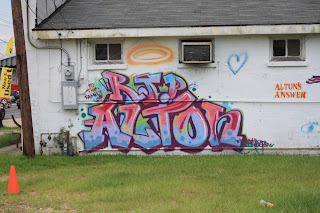The Center for Civil and Human Rights in Atlanta

Reflections by Eleanor Kimbro When we made it to the Center of Civil and Human Rights, I was really excited to get to see one of their most famous exhibits - The Lunch Counter Experience. I had read an article before we had left describing it as a simulation of a peaceful sit-in, and I saw stories of people saying just how jarring it was, but I was not prepared for what it was like at all. Four of us at a time sat down together and placed our hands flat on the table. We closed our eyes and put our headphones on. There was a moment of silence, and then we were suddenly in the middle of a loud diner. We heard an African-American man sitting with us speaking calmly to us, telling us how everything is going to be okay, and that we will be just fine if we're nice and quiet. A moment later, we're ambushed with loud crashing, stomping, and slamming fists on the bar. There's a lot of unintelligible yelling and glass breaking, which was enough to make my stomach curl up, bu




